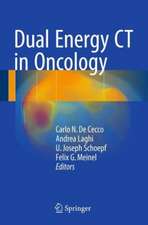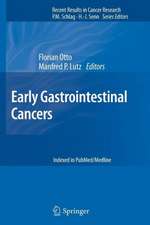Morphofunctional Aspects of Tumor Microcirculation
Autor Domenico Ribattien Limba Engleză Paperback – 15 oct 2014
| Toate formatele și edițiile | Preț | Express |
|---|---|---|
| Paperback (1) | 1085.13 lei 6-8 săpt. | |
| SPRINGER NETHERLANDS – 15 oct 2014 | 1085.13 lei 6-8 săpt. | |
| Hardback (1) | 1092.99 lei 6-8 săpt. | |
| SPRINGER NETHERLANDS – 29 sep 2012 | 1092.99 lei 6-8 săpt. |
Preț: 1085.13 lei
Preț vechi: 1142.24 lei
-5% Nou
Puncte Express: 1628
Preț estimativ în valută:
207.63€ • 216.81$ • 171.46£
207.63€ • 216.81$ • 171.46£
Carte tipărită la comandă
Livrare economică 15-29 aprilie
Preluare comenzi: 021 569.72.76
Specificații
ISBN-13: 9789401782043
ISBN-10: 9401782040
Pagini: 128
Ilustrații: XII, 116 p.
Dimensiuni: 155 x 235 x 7 mm
Greutate: 0.19 kg
Ediția:2012
Editura: SPRINGER NETHERLANDS
Colecția Springer
Locul publicării:Dordrecht, Netherlands
ISBN-10: 9401782040
Pagini: 128
Ilustrații: XII, 116 p.
Dimensiuni: 155 x 235 x 7 mm
Greutate: 0.19 kg
Ediția:2012
Editura: SPRINGER NETHERLANDS
Colecția Springer
Locul publicării:Dordrecht, Netherlands
Public țintă
ResearchCuprins
List of abbreviations.- Introduction.- 1.1.Tumor endothelial cell features.- 1.2. Tumor pericytes.- 1.3. Tumor lymphatic vessels.- 2.1.Tumor angiogenesis.- 2.2.The role of inflammatory cells in tumor angiogenesis.- 2.3. Alternative mode of tumor vascular growth.- 2.4. The role of bone marrow stem cells in tumor angiogenesis.- 3.1. Anti-angiogenic therapy.- 3.2. Metronomic chemotherapy.- 3.3.Combinatorial approach.- 3.4.Vascular targeting to tumor vasculature.- 3.5. Tumor vascular normalization.- 3.6. Drawbacks of anti-angiogenesis therapies.- References.
Textul de pe ultima copertă
Blood vessels of tumors display many structural and functional abnormalities. Their unusual leakiness, potential for rapid growth and remodelling, and expression of distinctive surface molecules mediate the dissemination of tumor cells in the bloodstream and maintain the tumor microenvironment. Like normal blood vessels, they consist of endothelial cells, mural cells and their enveloping basement membrane. Common features, irrespective of their origin, size and growth pattern, are absent hierarchy, formation of large-caliber sinusoidal vessels, markedly heterogeneous density, increased permeability, decreased and abnormal pericyte-endothelial cell adhesion, irregular basement membrane structure, and the incorporation of bone-marrow-derived endothelial progenitor cells in the microvasculature. A number of specific tumor endothelial markers have been identified, as well as chromosomal abnormalities. These markers may be used to deliver drugs specifically and selectively to the tumor microvasculature.
Caracteristici
Tumors depend on a vascular supply for their growth Tumor vasculature is clearly different to normal vasculature The phenotypic range of tumor endothelium is influenced by the specific tumor microenvironment and by epigenetic effects Two approaches are available for targeting tumor vasculature: a) prevent new blood vessel formation; b) disrupt tumor vasculature












